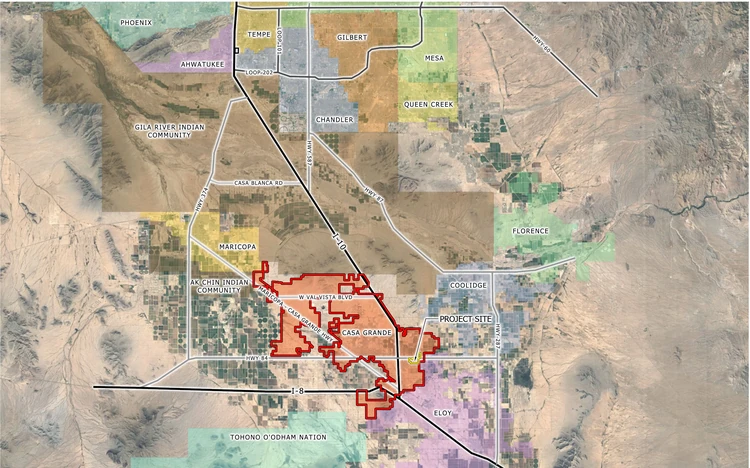
FOR IMMEDIATE RELEASE
July 13, 2020
The Monday Morning Quarterback
A quick analysis of important economic data released over the last week
Arizona is like many other states experiencing severe COVID-19 issues at the moment. We have become, unfortunately, a hot spot. Clearly, something has to be done to help remedy this ASAP. In a press conference late last week, Governor Ducey put forth information about what he believes is going on in the state right now and what he will do about it. As we have said before, America consists of 50 laboratories. And each state can see what others do and take what they consider the best of the other laboratories as their own. States have taken various approaches to dealing with the problems of COVID-19 and its effects on their economies. That’s the way it should be. Montana has different characteristics than New York which has different characteristics than Arizona and so on.
The early part of the last week’s press conference dealt with what the Governor considered to be inaccurate information that the national and local media had reported on Arizona’s COVID-19 statistics. Governor Ducey showed charts that indicate that the number of hospitalizations, hospital capacity and ventilator capacity related to COVID-19 are in far better shape than is portrayed in the press. He also discussed the back-up capacity that the state can utilize. These are the major metrics that he believes are most important in deciding about the phased openings of the economy.
As far as what we as a state will do going forward, the basic plan hasn’t changed much:
- People should physically (social) distance.
- If you can’t physically distance, wear a cloth mask.
- Wash your hands often.
- Stay at home if you are sick.
- And what was also implied was that people should stay at home as much as possible until the present situation is brought under control.
At the moment, elective surgeries will continue. The Governor believes that the state has sufficient surge capacity and is following that closely. He also discussed continued work on making long term care facilities as safe as possible. Also, testing capacity in the state is about to increase (again) significantly.
Also discussed were the unintended consequences of the stay at home order than ended in mid-May. The issues here include:
- Child safety (abuse)
- Educational impediments
- Mental health (both financial and emotional)
- The effects of loneliness and isolation
- Physical health
- Decreased cancer screening
- Decreased childhood immunizations
- Domestic violence
Since the current situation is really a balancing act between a set of bad alternatives, it’s important to look at this from all sides.
While some of the opening up of the economy has been revisited (closure of gyms, bars, some indoor and outdoor gathering venues, etc.), many people will be concerned as to why there was not more done (mandated masks, for example). In addition, there is a question as to whether tying restaurant capacity in a world of COVID-19 to half of the number that Fire Marshals believe is safe will end up actually increasing the number of people who can be seated safely. Time will tell.
Will this work? As we have said before, we are probably only in the second or third inning of this thing. Even a vaccine will not be a complete answer. It will take therapeutics that can mute the impact of the virus that will also be needed. This won’t be the last set of changes in how to deal with the virus. Undoubtedly, if there is not a significant change of direction in the stats in a relatively short period of time, there will be additional restrictions. In this second surge of COVID cases, the age of those infected is much lower than in the first round. This is because some people from this younger demographic have ignored common sense and concern for the health of others. That has to stop.
Whether the Governor is correct in his belief that voluntary compliance will work remains to be seen. But, as discussed below, we can’t ignore the economic and psychological effects of closing down too much to what was just opened without looking at the pros and cons of all alternatives. Yet, given the current political divide in the country, how individuals will weigh each of the alternatives will vary considerably. And we simply don’t have enough information to come up with a perfect solution. With time, that will change. But, right now, it can’t be fun to be an elected official.
It is clearly easier to shut down an economy than to reopen one. The country lost around 22 million jobs in March and April. In May and June, we regained 7.5 million jobs. Most of the jobs that came back were in the same sectors that suffered the major declines. Restaurants, bars, Educational & Health Services, Hospitality, Other Services, and Professional & Business Services. It was a faster restart than most economists expected. And it paved the way to muting the ripple effects of the initial set of layoffs on the rest of the economy.
The reclosing of part of what had reopened will slow or reverse the progress made. At very least there is a risk that the numbers start turning negative again. According to Goldman Sachs, more than 70% of the country had ether paused or reversed reopening plans. Many small business that received forgivable government loans have exhausted their funds while some larger companies are starting to cut back their staff in anticipation of a longer than expected downturn.
It gets worse. In two weeks, the CARES Act basically dies. Unless there is another round of income support for those who lost jobs due to attempts to stem Coronavirus and support small and medium sized businesses (without the perverse incentives not to work), things could get dicey quickly. It’s not only that 25%-35% of small businesses may not reopen, but, more medium and large businesses will be declaring bankruptcy and will either liquidate or be in bankruptcy court for potentially years. This is not a pretty picture. The ripple effects that will spread to all sectors of the economy will be difficult to contain as this drags out. The effects of a temporary set of circumstances are quite different from something that is perceived to be more permanent. And at very least there will have to be a shift of jobs away from those sectors that need crowds (airlines, hotels, bars, restaurants, sporting events, concerts, elevators in office and apartment buildings, etc.) to jobs in e-commerce and technology. All of this is a forced version of Joseph Shumpeter’s “Creative Destruction” at work. More on that in a another MMQ.
As for last week’s data, initial claims for unemployment insurance continued at a very high level. The number of American’s who filed initial claims since mid-March now equals almost one-third of March employment. The latest Blue Chip forecast suggests a huge second quarter drop in real GDP and then a restart. Given the difficulty knowing what will happen next, such forecasts in today’s world are, well, not very good. The ISM’s non-manufacturing index shows that the service sector expanded in June. And consumer credit declined.
In Arizona, new single family housing had a very good month relative to expectations. The market is very short on supply in both Phoenix and Tucson.
All of the data is nice to talk about when you call cousin Izzy in Milwaukee and need filler for the conversation. But, other than the good news in housing, I’m not sure what it’s worth.
U.S. Snapshot:
- Initial claims for unemployment insurance for the week of July 4th were down 100,000 from a week before but were still 522.7% above year earlier numbers. There were 1,314,000 initial claims. This is an indication that the ripple effects of earlier layoffs are beginning to take hold in the economy. This is not good news. The number of initial claims filed since mid-March equals about one-third of the total number of people employed in March. Initial claims are likely to rise in the next few weeks as states, counties and cities strive to get their outbreaks under control. In addition, fear of contracting the virus and the uncertain economic picture will keep consumers at home and will hold back spending.
- The ISM’s non-manufacturing index jumped up in June by 11.7 percentage points to 57.1. Any reading above 50 indicates expansion in the non-manufacturing sector. This exceeded forecasts and was the largest single-month increase in the series’ history. The increase came from reopenings that unleashed a wave of pent-up demand in May.
- Consumer credit contracted in May as the effects of COVID-19 continued to weigh on the economy. Revolving credit, mainly credit card debt, posted its largest monthly decline in the history of the series in April and fell again in May. In April, consumer spending slowed to a crawl aside from basic necessities. In May, even though the economy began to pick up, consumers were cautious. Nonrevolving credit, which includes car loans, student loan debt and other large ticket durables bounced back in May.
Arizona Snapshot:
- Initial claims for unemployment insurance fell modestly last week but was still 484.2% above year earlier levels. Since mid-March, a total of 754,489 Arizonans have filed an initial claim. That amounts to 25.3% of the total employed in the state in Mid-March.
- According to the Home Builders Association of Central Arizona, there were 2,403 new single family building permits in the Greater Phoenix area in June. This is up 9.6% from a year ago. Clearly, there was pent-up demand created over the past few months. That, combined with an extremely low inventory of single family listings on the MLS combined with record low new home interest rates and millennials who wanted their own yard and more distance between them and their neighbors will continue to create demand for single family units.
- Total listing on the Tucson MLS is also at a very low level. Listings for single family homes, at 1,349, are almost 49% below a year ago.
About EDPCo
Elliott D. Pollack & Company (EDPCo) offers a broad range of economic and real estate consulting services backed by one of the most comprehensive databases found in the nation. This information makes it possible for the firm to conduct economic forecasting, develop economic impact studies and prepare demographic analyses and forecasts. Econometric modeling and economic development analysis and planning are also part of our capabilities. EDPCo staff includes professionals with backgrounds in economics, urban planning, financial analysis, real estate development and government. These professionals serve a broad client base of both public and private sector entities that range from school districts and utility companies to law firms and real estate developers.
For more information, contact –
Elliott D. Pollack & Company
5111 N. Scottsdale Rd, Suite 202,
Scottsdale, AZ 85250
480-423-9200 Website | Twitter | Facebook







